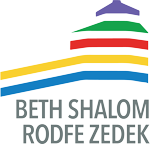Parashat Tetzaveh continues the theme from last week with
God setting up the infrastructure and the staff for the priestly rituals of
sacrifice. Last week we received the instructions for building the Tabernacle –
God’s dwelling place (mishkan) among the Israelites. This week we receive
instructions for the vestments of the priests and the ritual of ordaining them.
We also get the instructions for the lighting of the menorah and the building
of the incense altar.
Here we begin to get a sense of God’s plan for how the Israelites
will make it possible to have a close relationship with God and how they will
carry out Divine service through the sacrificial rituals.
Some of the questions on my mind this week are:
What does it mean to have God’s Presence abide among the
people, and what can we deduce from the parashah about the nature of the
connection between the people and God’s Presence? What does it mean to connect
to God through these priests and these offerings of animals and grains and
incense?
I plan on having us read the haftarah from the prophet
Ezekiel as well. He is addressing the people in Babylon. They have witnessed the destruction of the
Temple and their sacrificial worship system, and they are now living in exile. In
this prophecy, Ezekiel gives detailed instructions for the reconstruction and
restoration of the Temple upon the people’s return to the Land of Israel.
The haftarah raises a number of questions. What do we think
it meant to experience the destruction of the Temple and to lose the ability to
connect with God via the sacrifices? What might it have felt like to hear
Ezekiel describe the dimensions and materials to be used to rebuild the Temple,
in exile? How might simply hearing his words or reading the passage effect a
sense of closeness to God or restoration of the relationship that was once
lost?
After the destruction of the 2nd Temple, the
rabbis posit that studying words of Torah does the same thing that sacrifices
did when they had the Temple. Is the text enough to create that connection, or
do we need the actual sacrificial system?
Shabbat Shalom everyone! I’m looking forward to studying
together tomorrow morning.
And don’t forget that Purim begins tomorrow evening. We have
our carnival at 4pm and shpiel at 5:30pm. There will be food and wine available
for purchase at the carnival, so you can come and eat and then enjoy “Chelm and
its Hat: How simple is that!” – an intergenerational production of the Megilah
of Esther, with twist of Dr. Seuss and a sprinkle of Chelm. It should be really
fun…and hamentaschen afterwards!

No comments:
Post a Comment